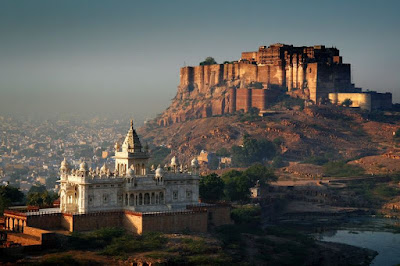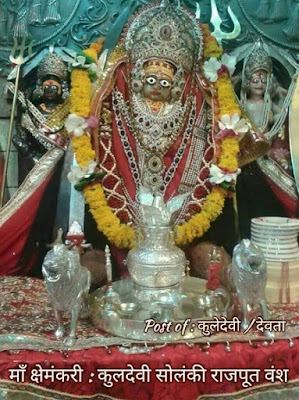Mehrangarh Fort and Jaswant Thada, Jodhpur
Mehrangarh Fort and Jaswant Thada, Jodhpur
Mehrangarh Fort stands a hundred feet in splendor on a perpendicular cliff, four hundred feet above the sky line of Jodhpur. Burnished red sand stone, imposing, invincible and yet with a strange haunting beauty that beckons . Much has been written about the Citadel of the Sun, for truly, it is one of the most impressive in all Rajasthan. So colossal are its proportions that Rudyard Kipling called it “ the work of giants”. Today, it is acknowledged as one of the best preserved fort in India.
Mehrangarh the Fort of Jodhpur crowns a rocky hill that rises 400 feet above the surrounding plain, and appears both to command and to meld with the landscape. One of the largest forts in Rajasthan, it contains some of the finest palaces and preserves in its museum many priceless relics of Indian courtly life.
For over five centuries Mehrangarh has been the headquarters of the senior branch of Rajput clan known as the Rathores. According to their bards, the ruling dynasty of this clan had at an earlier period controlled Kanauj (in what is known as Uttar Pradesh). Like other prominent medieval Rajput rulers – including the famous Prithviraj Chauhan – they were defeated by the invaders from Afghanistan at the end of the 12th century. This catastrophe led to the disruption and migration of the early Rajput clans that they led. The Rathores came to Pali, in Marwar, in what is now central Rajasthan. It is claimed that they were to settle there to protect Brahmin villages against cattle-rustling local tribes. The story may seem somewhat fanciful, but the protection of the priestly caste in one of the traditional roles assigned to the Rajputs. Their task in Pali was the basis of their expanding power in the region.
Rao Chunda (r. 1384-1428), the twelfth Rathore to rule in Marwar, established his capital at Mandore, which he had acquired as a part of a dowry. Two generations later, Rao Jodha (r. 1438-89) began to build a fort at a new site six miles to the south, on an isolated rock with a higher elevation and better natural defences. Jodhpur, the town that sprang up at its base, was named after him. The fort was named Mehrangarh, meaning ‘fort of the sun’ – a reference to the clan’s mythical descent from the sun god Surya. Over 500 yards long, its wall rises in places to a height of 120 feet and is 70 feet thick.








